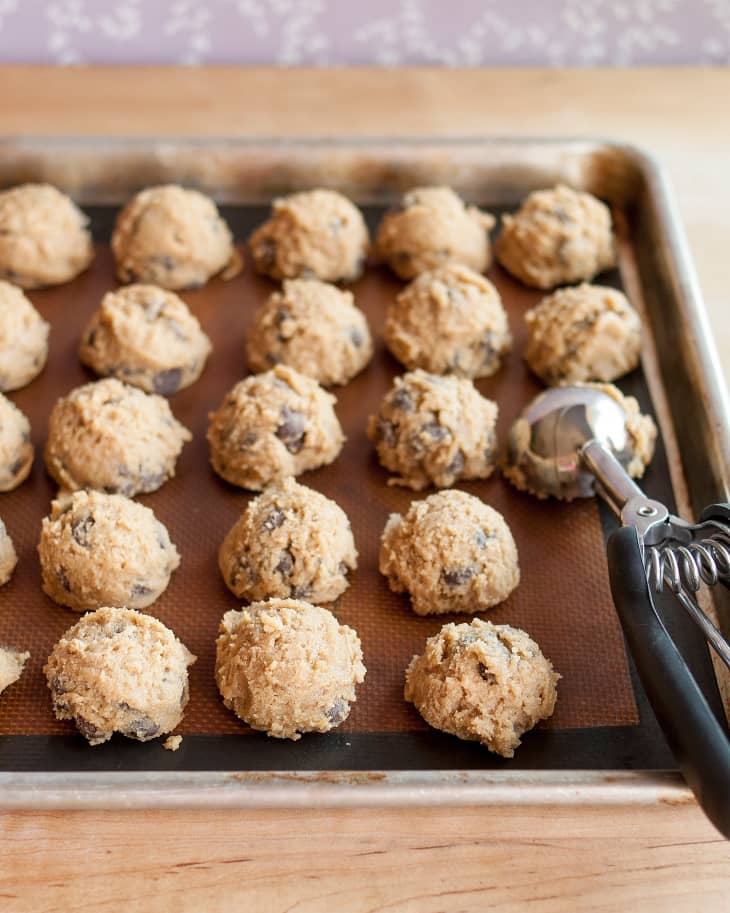The CDC Warns America Against Eating Raw Cookie Dough
Around the holiday season, people who like to siphon that fun, carefree feeling from the spate of year-end celebrations go into overdrive. People rail against Starbucks holiday cups and over-the-top Christmas light displays. The latest controversy – care of the CDC — concerns one of America’s favorite pastimes: eating raw cookie dough. But unfortunately, this one seems pretty valid.
Almost every year around the Christmas season, the CDC re-ups its warning against consuming raw cookie dough in any form. This year is no different, and if you’re feeling a bit of holiday mischievousness brewing, make way for the much more familiar feeling of holiday downer as you take a read-through.
“When you prepare homemade cookie dough, cake mixes, or even bread, you may be tempted to taste a bite before it is fully cooked,” the CDC correctly assumes on its website. “But steer clear of this temptation — eating or tasting unbaked products that are intended to be cooked, such as dough or batter, can make you sick. Children can get sick from handling or eating raw dough used for crafts or play clay, too.”
Because I don’t have kids, I asked one of my best friends (and reigning friend group cookie queen) who is the parent of two beautiful Gerber-esque children for her opinion on all of this.
“Funny, we just made play clay during Thanksgiving break, and I literally didn’t think at all about the possible contamination from raw flour,” she said, under the condition of anonymity, because online moms are scary. I didn’t think of flour being the problem in raw cookie dough, either, since the raw eggs in it always seemed to be the bigger issue, but the CDC points out both are raw products.
“[Raw flour] hasn’t been treated to kill germs like Escherichia coli (E. coli),” the CDC states. “The bacteria are killed when food made with flour is cooked. This is why you should never taste or eat raw dough or batter — whether made from recalled flour or any other flour.”
The CDC does not mention why anyone would willingly use recalled flour, but I’ll give them points for being extra cautious with the warning, since this seems to be coming up because of a recent salmonella outbreak in Duncan Hines cake mix. This most recent recall seems to bring memories of 2016, when an outbreak of E. coli infections linked to raw flour made 63 people sick. “Flour products have long shelf lives and could be in people’s homes for a long time. If you have any recalled flour products in your home, throw them away,” the CDC warns.
I know you’re thinking the same thing I am right now, which is “what about raw cookie dough ice cream?” This question has been asked many times before, and in 2016 People magazine asked around, finding that most if not all major raw cookie dough sellers use pasteurized eggs (if they use eggs at all), as well as a flour heating treatment that reduces the risk of contamination.
“In 2010, Nestle USA (you know, the people behind those break-and-bake treats) switched to the technology,” says People via Food Business News, adding that spokespeople for Ben & Jerry’s and Nestle (which include ice cream brands Breyer’s, Edy’s and Haagen-Dazs) all confirm their raw cookie dough ice cream is more cookie than “raw.”
So, until we figure out a way to replicate their safety techniques in our home kitchens, just buy a carton of ice cream — and bake your cookies before eating them.
